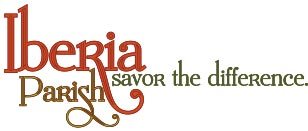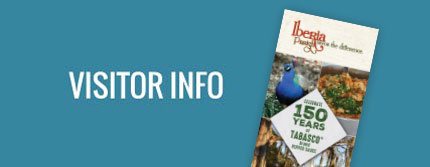By Johanna Hyves, French Intern from St.-Jean-d'Angély
(pictured with Sloane LaBiche at Lake Fausse Pointe State Park)
I had the chance to discover some emblematic places in Iberia Parish with Brittany Racca and Sloane LaBiche, who both work at the Iberia Parish Convention & Visitors Bureau, to get familiar with this region.
First, we went to the Lake Fausse Pointe Park to enjoy a Mardi Gras parade, surrounded by a beautiful landscape of swamp, forests and by the bayou. The parade was short but really great, colorful, with a lot of people and music. It was really fun to be there.
J’ai eu la chance de visiter quelques lieux emblématiques de la Paroisse d’Ibérie avec Brittany Racca et Sloane LaBiche, qui travaillent toutes deux au Iberia Parish Convention & Visitors Bureau, afin de me familiariser avec cette région.
Tout d’abord, nous sommes allées au Lake Fausse Pointe Parc pour assister à une parade de Mardi Gras, entourée par un magnifique paysage de marais, forêt, ainsi que par le bayou. La parade fut courte mais très réussie, pleine de couleurs et de musique. Ce fut très amusant d’y avoir participé.
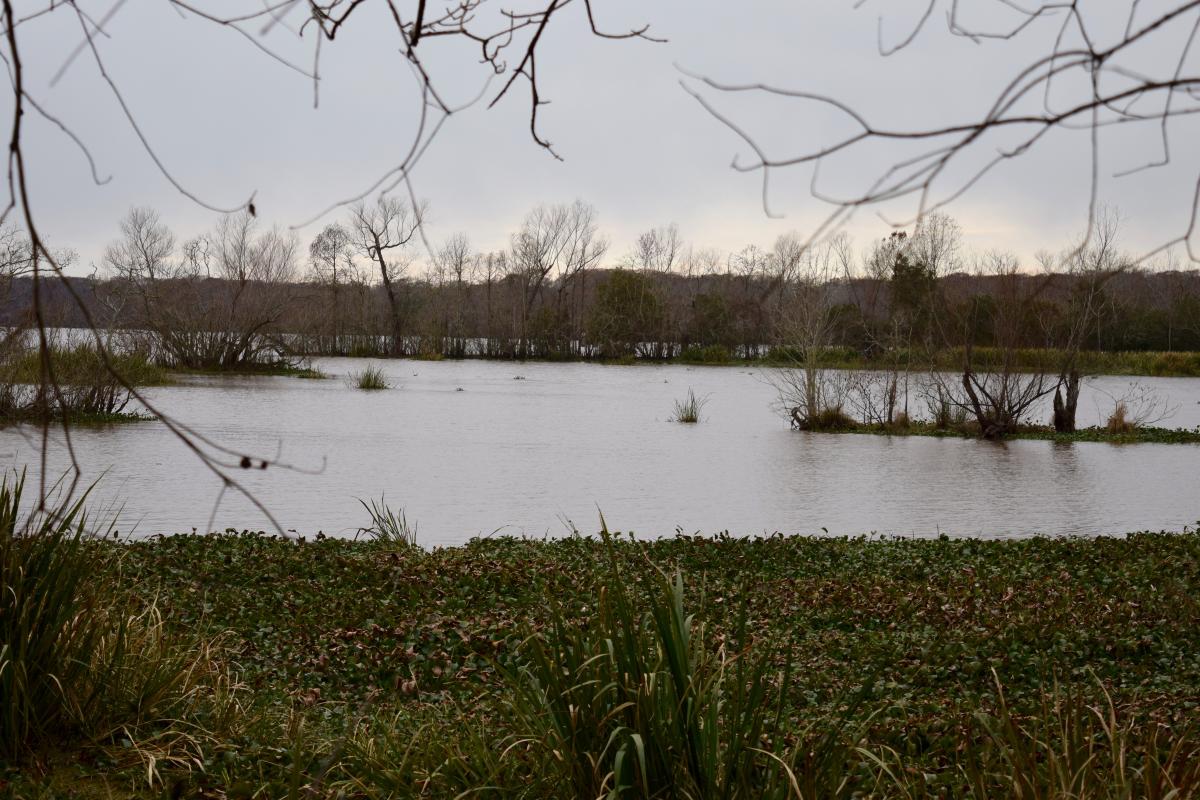

Then, we went to the city of Jeanerette to visit the Jeanerette Bicentennial Museum, which is a Victorian house built in 1902. It was really interesting to learn about the sugarcane and the local people’s history, thanks to a lot of great exhibits, archives and other old objects exposed in the different rooms of the house. We visited “The Hall” with photos of historic homes of Jeanerette, “The Victorian Room,” which is a bedroom set up like in the 20th century, or the “Swamp Room” where we discovered some specimens of Louisiana’s wildlife, like alligators, fish, birds or mammals living in the swamp.
Nous sommes également allées à Jeanerette afin de visiter le Jeanerette Bicentennial Museum qui est une maison victorienne construite en 1902 transformée en musée. Ce fut intéressant d’apprendre des choses sur l’histoire de la canne à sucre ainsi que de la population locale grâce à de nombreuses expositions, des archives et d’autres objets d’époque exposés dans les différentes pièces de la maison. Ainsi, nous avons pu visiter “The Hall” avec des photos historiques de maisons de Jeanerette, “The Victorian Room” qui est une chambre reconstituée comme dans les années 1900, ou encore “The Swamp Room” où l’on peut découvrir différents spécimens d’animaux vivants dans la région comme des alligators, des oiseaux, des poissons ou bien des mammifères que l’on peut trouver dans les marais.
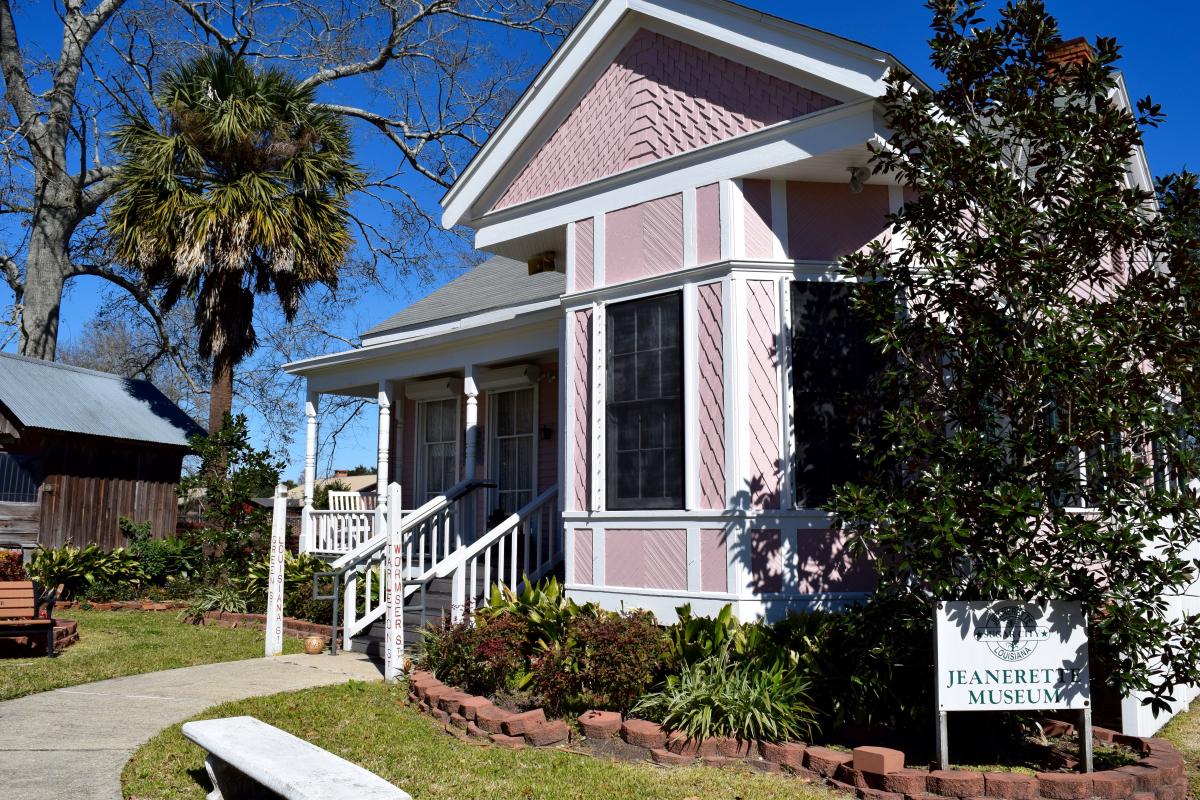
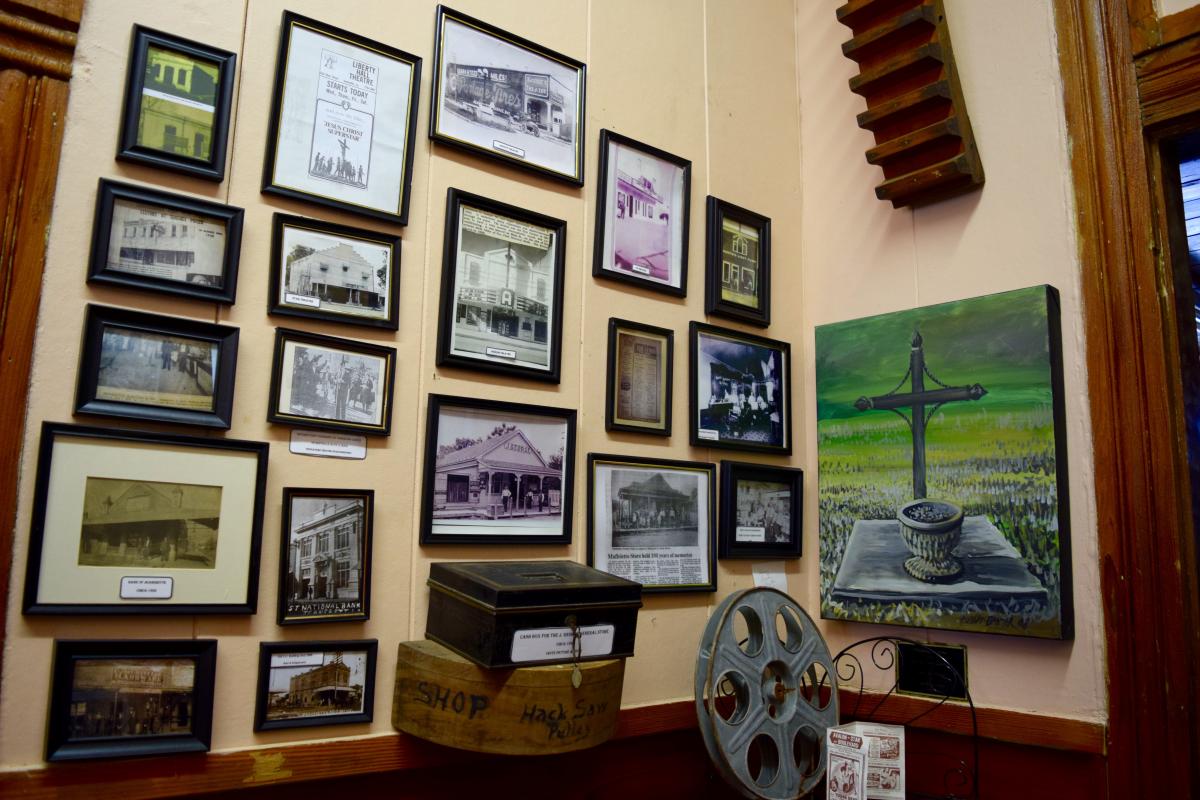
Next, we visited Rip Van Winkle Gardens on Jefferson Island. We ate at the Café Jefferson and then we started to explore this wonderful garden. We saw some beautiful peacocks around a Japanese temple. Also, we visited the Joseph Jefferson’s mansion which was built in 1870, near the beautiful Lake Peigneur.
Ensuite, nous sommes allées au Rip Van Winkle Garden à Jefferson Island. Nous avons déjeuné au Café Jefferson puis nous avons commencé à explorer ce magnifique jardin. Nous avons pu admirer des paons près d’un temple japonais. Nous avons également visité le manoir de Joseph Jefferson, construit en 1870 près du magnifique Lake Peigneur.
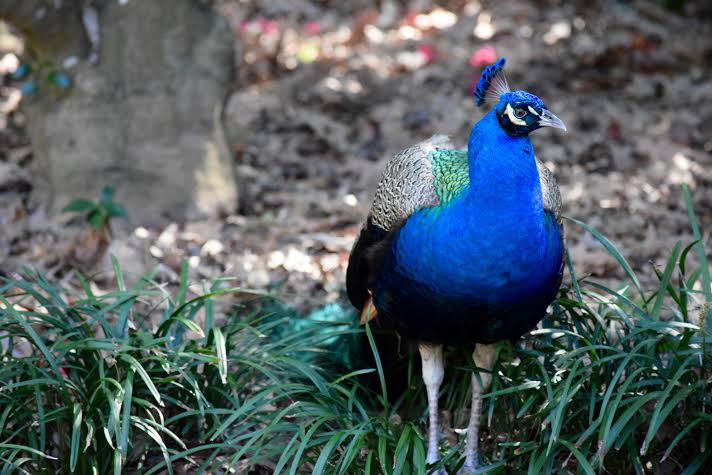
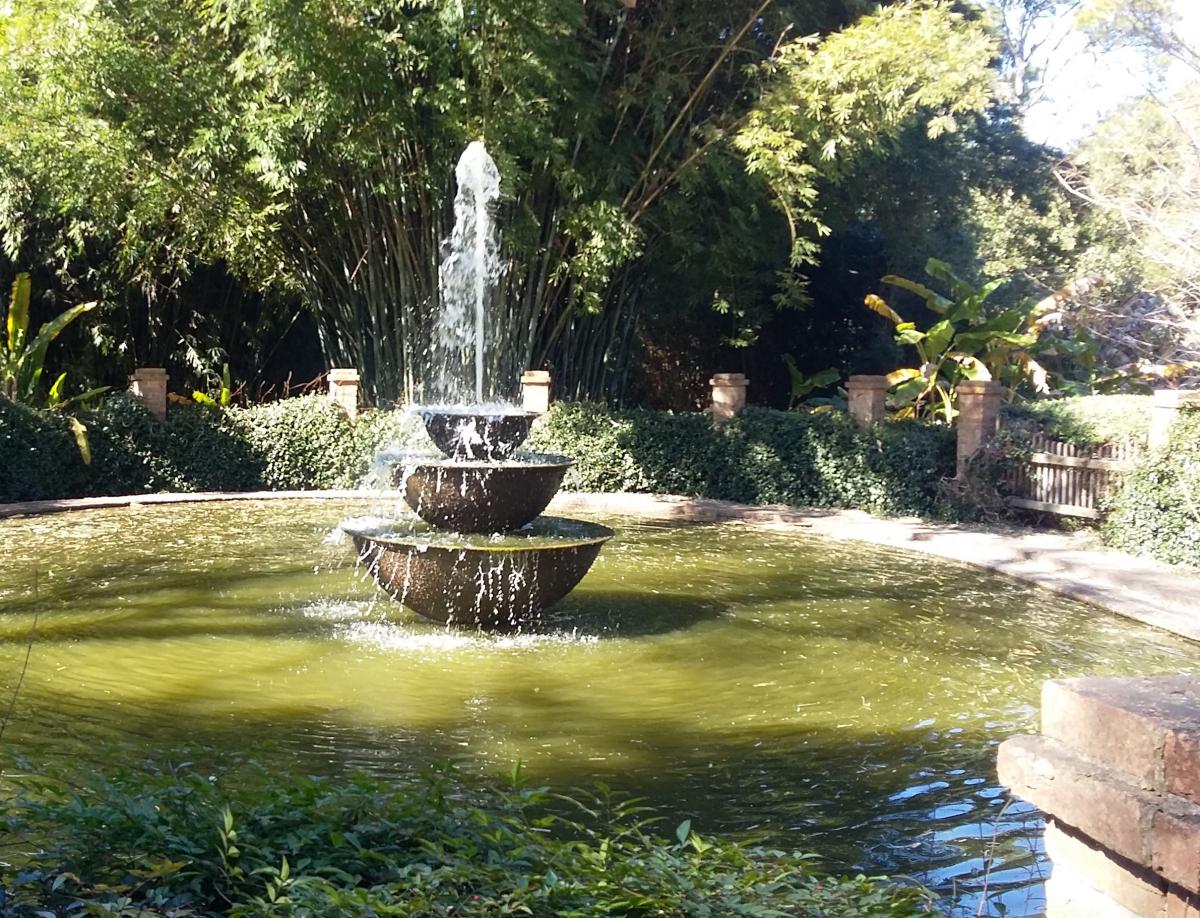
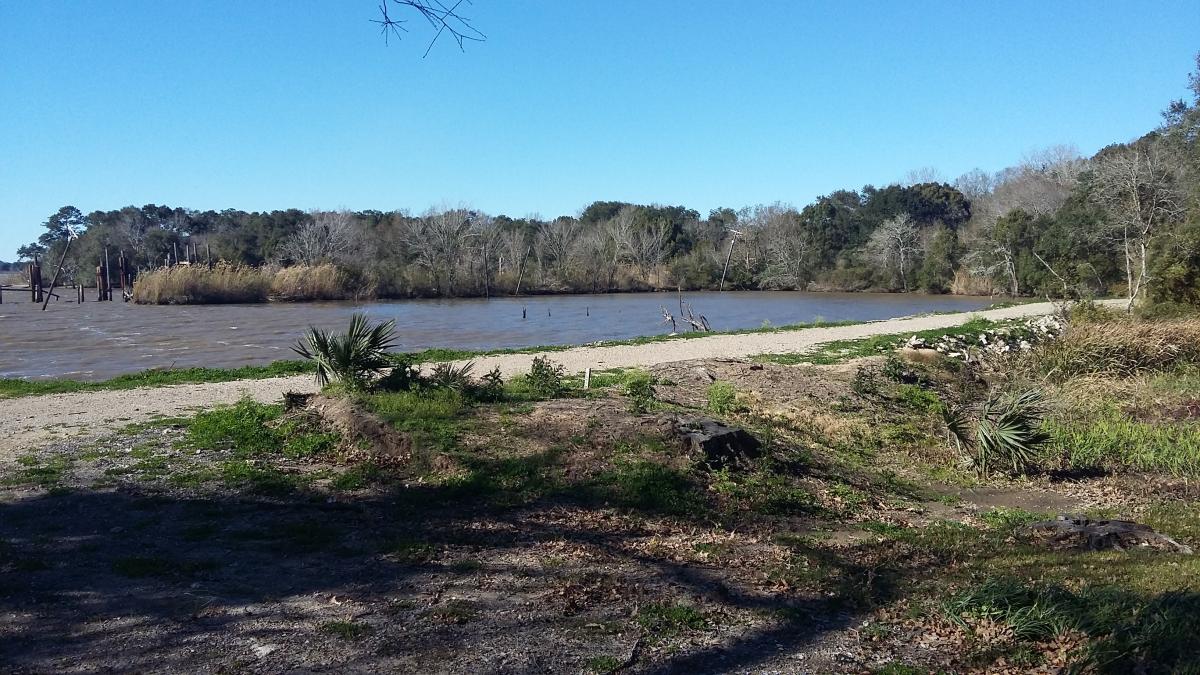
Finally, we went to the Shadows on the Teche in New Iberia which was the house of the sugar planter David Weeks. Built in 1834, it is now an historical site preserved that people can visit.
Enfin, nous sommes allées au "Shadows on the Teche" à New Iberia qui fut la maison du planteur de canne à sucre David Weeks. Construite en 1834, elle est aujourd'hui un site historique préservé que l'on peut visiter.

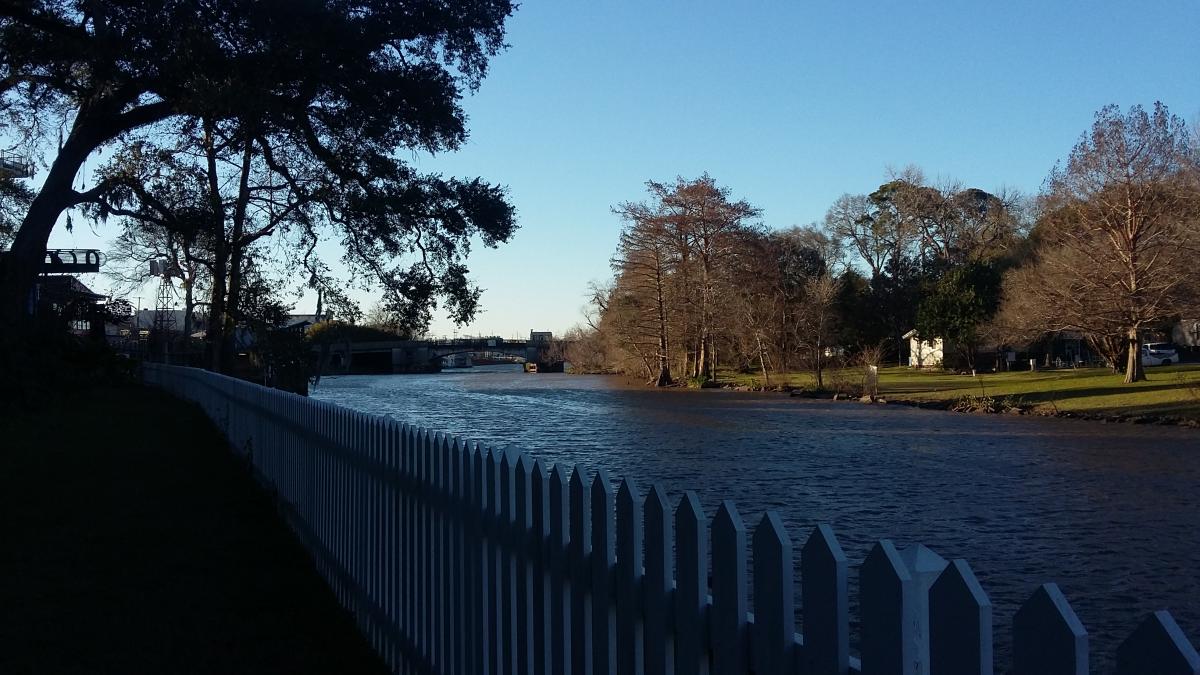
My other blog posts / Mes autres blogs:
